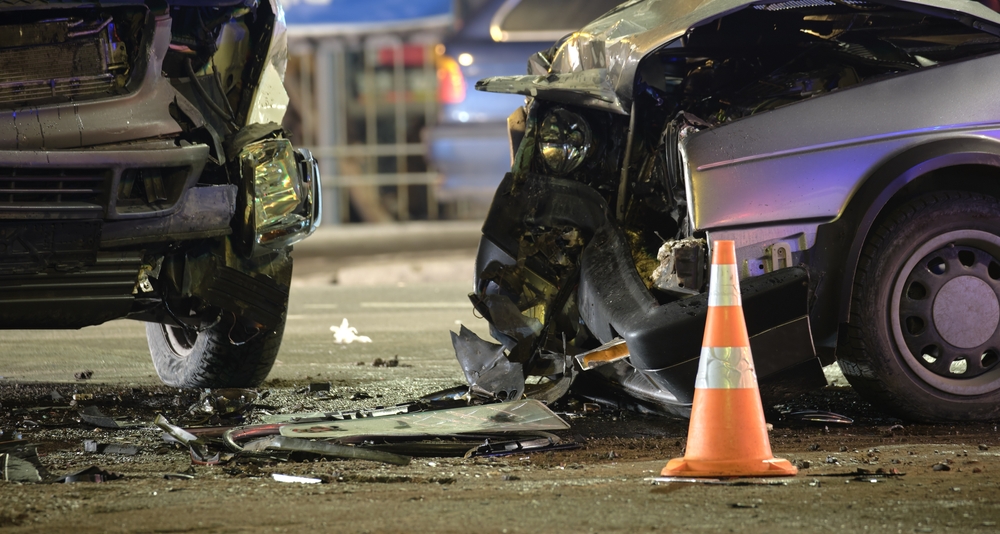
Author: John Mattiacci | Owner Mattiacci Law
Published November 10, 2025

Table of Contents
ToggleIf you’ve been in a serious car accident in Pennsylvania, pain and suffering can be a big part of your claim.
Medical bills and lost wages cover the financial side, but they don’t reflect the physical pain, emotional stress, or the way your daily life gets turned upside down.
That’s where pain and suffering damages come in.
Now, the big question is simple: does Pennsylvania put a cap on these damages?
For most private auto accident claims, the answer is NO. There isn’t a set dollar limit on how much you can recover for pain and suffering.
But, like most things in law, there are a few exceptions you should know about.
In this post, we’ll explain if Pennsylvania caps pain and suffering damages in auto accident claims.
Is There A Cap Pain And Suffering Damages In Auto Accident Claims?
There is no cap on pain and suffering damages in most auto accident cases.
If you’re hit by another driver and file a personal injury claim, the amount you can recover depends on the impact the crash had on your life.
It’s not set by a formula. It’s determined through negotiations with insurance companies or by a jury if the case goes to trial.
For example, someone with a broken arm that heals quickly will likely receive less than someone with permanent mobility issues or disfigurement. The law gives juries flexibility to decide what’s fair based on the evidence and the severity of your injuries.
Also Read: What Happens During a Pain and Suffering Settlement Hearing?
That said, Pennsylvania law does place caps in specific situations. These caps don’t apply to every case, but when they do, they can affect the total amount you can receive.

When Caps Do Apply In Pennsylvania
Let’s go over these caps in detail:
Claims Against Government Entities
If your accident involves a government vehicle or a government employee, things work differently. Pennsylvania law limits how much you can recover in these claims.
For state-level claims, the maximum you can receive is $250,000 per person and $1 million total per incident.
Local government claims have their own cap at $500,000 per incident.
So, if a city bus causes a multi-car crash, the total payout for all injured parties combined can’t exceed that cap. And that’s not just for pain and suffering, that limit includes everything, like medical costs and lost wages too.
It can feel a bit unfair, especially in cases with multiple serious injuries, but that’s how the law is structured in Pennsylvania.
Also Read: Can I Sue for Pain and Suffering After a Car Accident?
Limited Tort Insurance
Pennsylvania has a “choice no-fault” system for auto insurance.
When you buy a policy, you pick either full tort or limited tort.
Full tort gives you the right to pursue pain and suffering damages no matter the severity of your injuries. Limited tort, on the other hand, restricts this unless your injuries qualify as “serious.”
Serious injuries typically involve things like:
- Significant disfigurement
- Permanent impairment
- Death
Minor injuries, even if they cause real discomfort, usually don’t unlock pain and suffering damages if you have limited tort coverage.
This choice can have a big impact after a crash. Many drivers pick limited tort to save money on premiums, but they don’t always realize what they’re giving up until an accident happens.
Punitive Damages
Punitive damages are different from pain and suffering. They’re meant to punish the at-fault party for especially reckless or outrageous behavior, not to compensate you for your losses.

In Pennsylvania, punitive damages are capped in certain types of cases.
For example, in medical malpractice cases, punitive damages can’t exceed 200% of the compensatory damages, and a portion of that award goes to the state.
Punitive damages against government entities are also capped.
These don’t usually apply in standard auto accident claims, but it’s good to know they exist.
Also Read: How Is Pain and Suffering Calculated after a Car Accident?
How Pain And Suffering Is Calculated
Pennsylvania doesn’t use a strict formula for pain and suffering. There’s no chart or table that decides what your pain is worth.
Instead, two common approaches are often used to help guide settlements and negotiations:
- Multiplier method
- Per diem method
The multiplier method takes your total economic damages (like medical bills and lost wages) and multiplies them by a number that reflects the severity of your injuries.
Minor injuries might use a lower multiplier, like 1.5. Serious or permanent injuries could use a much higher number, like 4 or 5.
Per diem method assigns a daily dollar amount to your pain and suffering and then multiplies it by the number of days you’ve been affected.
For example, if $200 is assigned per day and your recovery takes 180 days, that adds up to $36,000.
Why Talking To A Lawyer Can Make A Difference
Pain and suffering damages can be tricky to prove.
It’s not like medical bills where you have receipts. You’re trying to show how the accident changed your daily life, your mental health, your ability to enjoy things you used to love.
That takes strategy and evidence.
A good lawyer knows how to build that story. They can gather medical records, bring in expert testimony, collect statements from family and friends, and paint a clear picture of how the accident affected you.
They also know the ins and outs of Pennsylvania’s tort system and can identify any caps or limitations that might apply to your case.
Insurance companies often downplay pain and suffering or offer lowball settlements. Having someone on your side who understands the system can make a big difference in how much compensation you actually receive.
Bottom Line
Pennsylvania doesn’t place a general cap on pain and suffering damages in auto accident claims involving private individuals. For most people, that means your compensation depends on the strength of your case and the impact of your injuries.
Still, some exceptions can limit what you recover.
Government claims have strict caps, limited tort coverage can restrict your rights, and punitive damages follow separate rules.
If you’re unsure how these caps apply to your situation, it’s smart to get legal advice early on.
